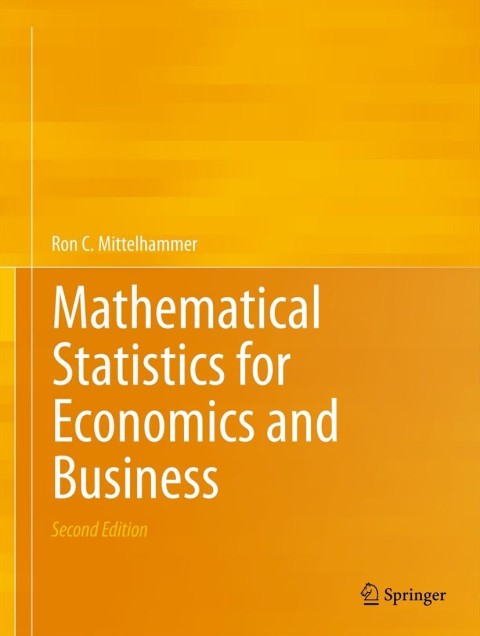Your company sells trigger mechanisms for air bags that are used in many modern domestic and foreign-built
Question:
Your company sells trigger mechanisms for air bags that are used in many modern domestic and foreign-built passenger cars. The reliability of such trigger mechanisms is obviously critical in the event that an air bag-equipped vehicle is involved in an accident. One large Detroit automobile manufacturer said that they would be willing to purchase trigger mechanisms from your company if you could provide convincing support for the statement that, in repeated simulations of an impact of \(15 \mathrm{mph}\), the expected number of impacts needed to obtain the first failure of your trigger (i.e., the trigger does not signal an air bag deployment) was greater than or equal to 1,000 .
Management has randomly chosen 10,000 of the trigger mechanisms for a testing program in which the number of simulated impacts needed to obtain the first failure will be observed for each mechanism. You need to estimate the expected number of impacts needed to obtain the first failure of the trigger mechanisms you manufacture. You intend to use the outcome of the sample mean as your estimate of this expected number of impacts.
a. Define an appropriate statistical model for the sampling experiment, and justify your choice.
b. Is the sample mean an unbiased estimator in this case? Why?
c. Is the sample mean an asymptotically unbiased estimator? Why?
d. Is the sample mean a consistent estimator? Why?
e. Is the sample mean a BLUE (or equivalently, a MVLUE)? Why?
f. Derive the Cramer-Rao Lower Bound for the variance of unbiased estimators of the expected number of impacts to obtain the first failure. (Hint: You may use the alternative (second-derivative) form of the bound it might be a little easier to work with in this case.)
g. Is the sample mean a MVUE? Why?
h. Use Theorem 7.17 on the attainment of the CramerRao lower bound to derive the MVUE of the expected number of impacts needed to obtain the first failure.
i. Define an appropriate asymptotic distribution for the sample mean in this case. Is the sample mean asymptotically efficient?
j. The 10,000 observations resulted in \(\sum_{i=1}^{10,000} x_{i}=\) \(1.5 \times 10^{7}\). What is your estimate of the expected number of impacts needed to obtain the first failure?
k. Is \(\left(\bar{X}_{n}ight)^{-1}\) a consistent estimator of \(p\), the probability that a trigger successfully signals deployment of the air bag on any given trial? 1. Define an asymptotic distribution for the estimator \(\left(\bar{X}_{n}ight)^{-1}\) of \(p\). Is the estimator asymptotically efficient?
\(\mathrm{m}\). Use the estimator \(\left(\bar{X}_{n}ight)^{-1}\) to estimate \(p\), and use this estimated value in the asymptotic distribution you defined for \(\bar{X}_{n}\) to estimate the probability that an estimate generated by \(\bar{X}_{n}\) would be within \(\pm 50\) units of the population mean.
n. What, if anything, can you say to the Detroit manufacturer to convince him/her to buy your trigger mechanisms?
Step by Step Answer:

Mathematical Statistics For Economics And Business
ISBN: 9781461450221
2nd Edition
Authors: Ron C.Mittelhammer





